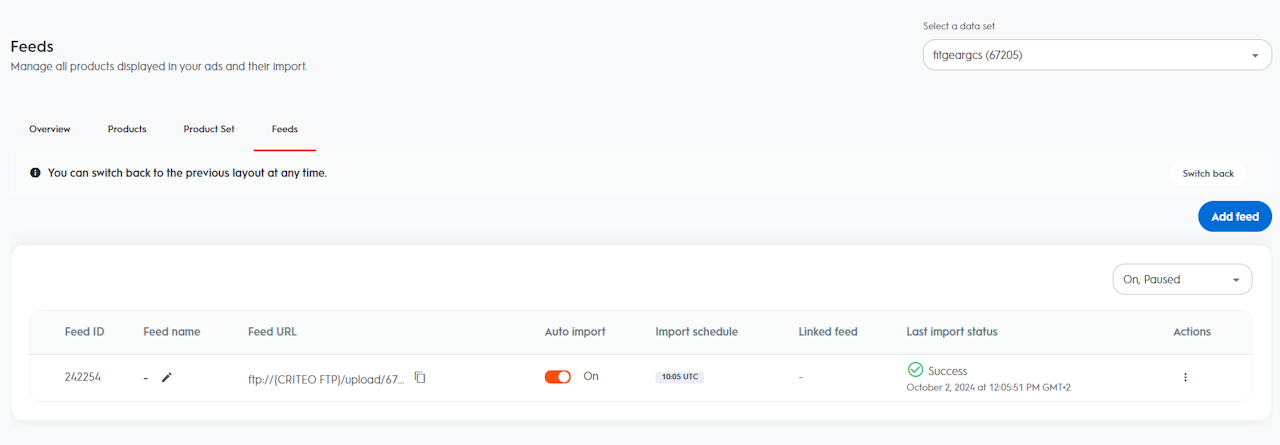

Understanding Feeds page
The Feed Management, or Feeds page, allows you to manage one or more feed configurations. You can view, modify, activate, schedule, and archive feeds and monitor their last import status. If you handle multiple feeds, you can link them together and schedule simultaneous imports to update the product data.
Features and Functionality
Read on to learn about the key features and functionalities designed to enhance your feed management experience.
Main Table Overview
The main table lists all feed configurations and includes the following key details:
Feed ID: A unique identifier for each feed.
Feed Name: You can easily rename your feeds for better identification.
Feed URL: Displays the source URL of the feed, which can be copied or viewed as needed.
Auto Import: A toggle to enable or disable daily imports for each feed.
Active Feeds are imported on a daily schedule.
Paused Feeds will not be imported until reactivated.
Import Schedule: Indicates the time(s) when scheduled imports will occur.
Linked Feeds: If multiple feeds are linked for simultaneous import, this column shows:
The number of feeds linked to the main feed (e.g., N linked feeds).
The Feed ID of the main feed that the other feeds are linked to (e.g., Linked to feed ID 369258).
Last Import Status: Shows the result of the last import process, either Success or Error.
Actions: The following actions are available for each feed via the Action menu:
Feed Settings: Edit the feed configuration (e.g., name, URL).
Schedule & Link:
Schedule up to four daily imports at specified times.
Link multiple feeds for simultaneous imports, ensuring products are always up to date. Linked feeds appear in the Linked Feeds column.
View Import Log: Access detailed logs of recent imports, useful for troubleshooting errors or reviewing successes.
Archive: Move a feed into an archived state when it’s no longer needed.
This option:Sets all products associated with the feed to Not Displayable.
Marks the feed as archived, meaning it cannot be reactivated or used for future imports.
Archived feeds are listed separately in the Archived section.
Filtering Feeds
The Feeds page provides filters to help you easily manage and sort feeds based on their current status:
On: Displays only active feeds (enabled for import).
Paused: Lists feeds that are currently disabled and not scheduled for import.
Archived: Shows feeds that have been archived and can no longer be activated or used for imports.
Adding a New Feed
Follow the steps to add a new source of data from another feed:
Click on the Add New Feed button at the top of the page.
You will be prompted to provide necessary details, such as the feed URL, mapping, and rules.
Once added, the feed can be scheduled, linked, or modified as needed.
